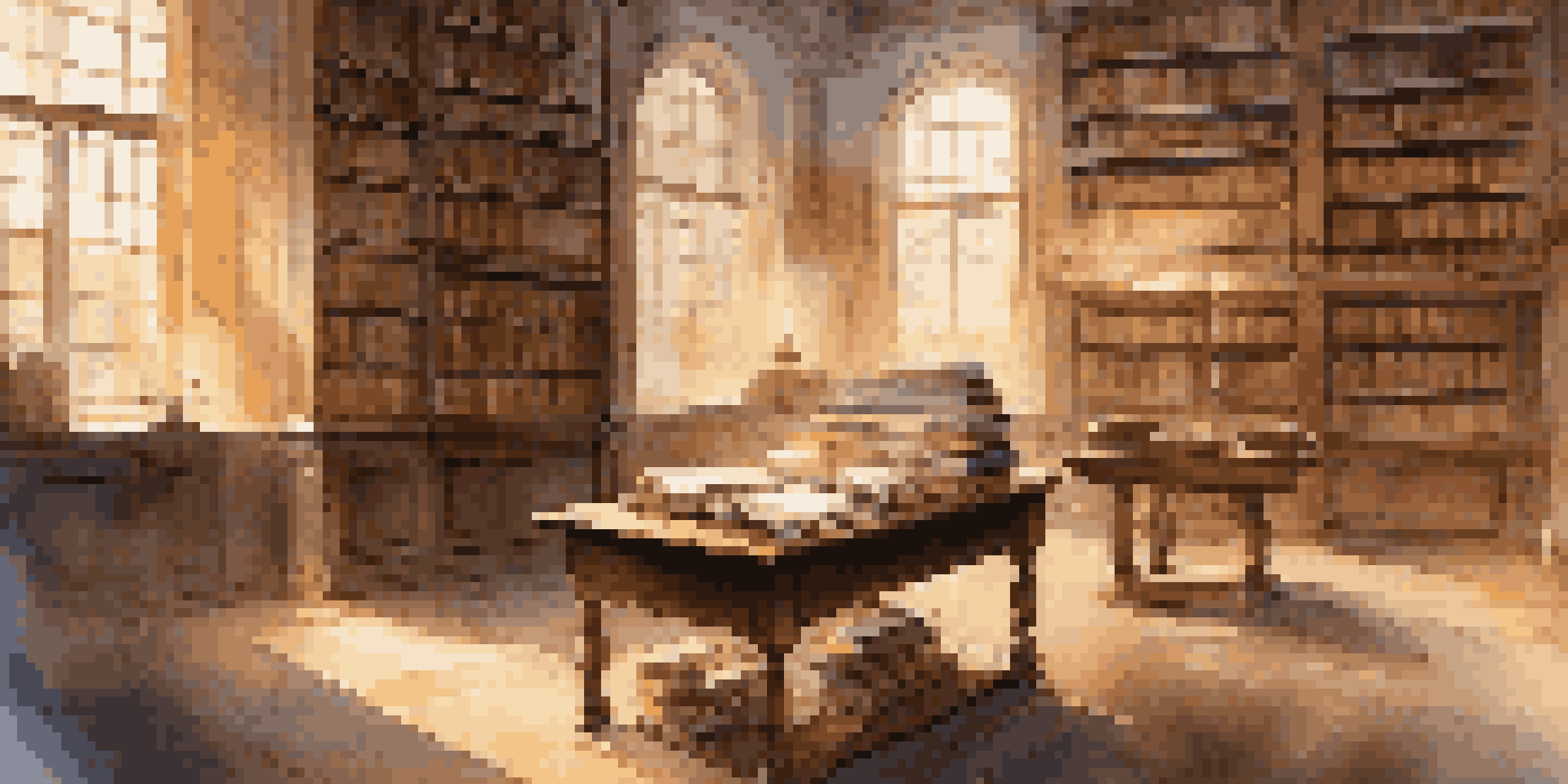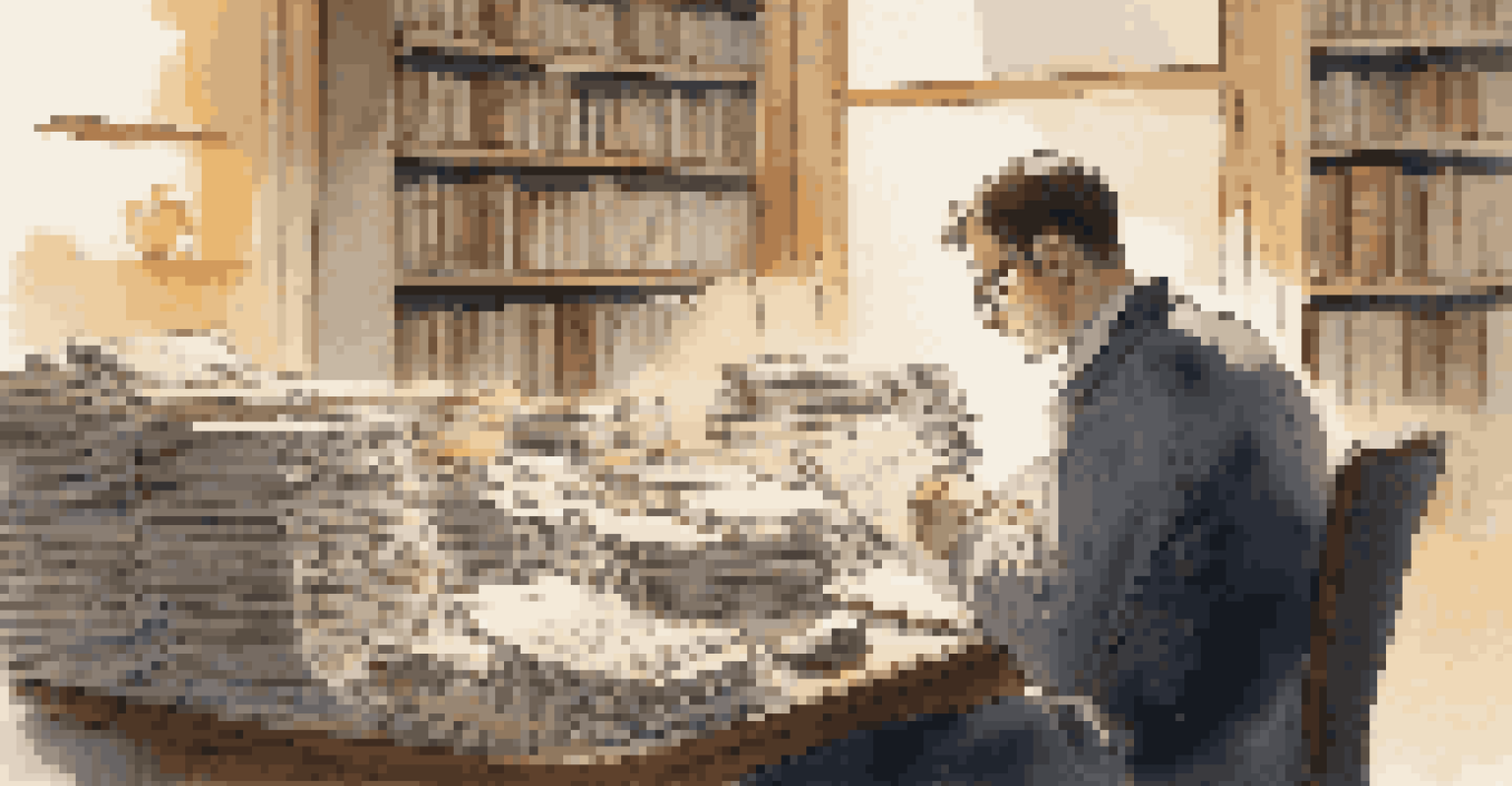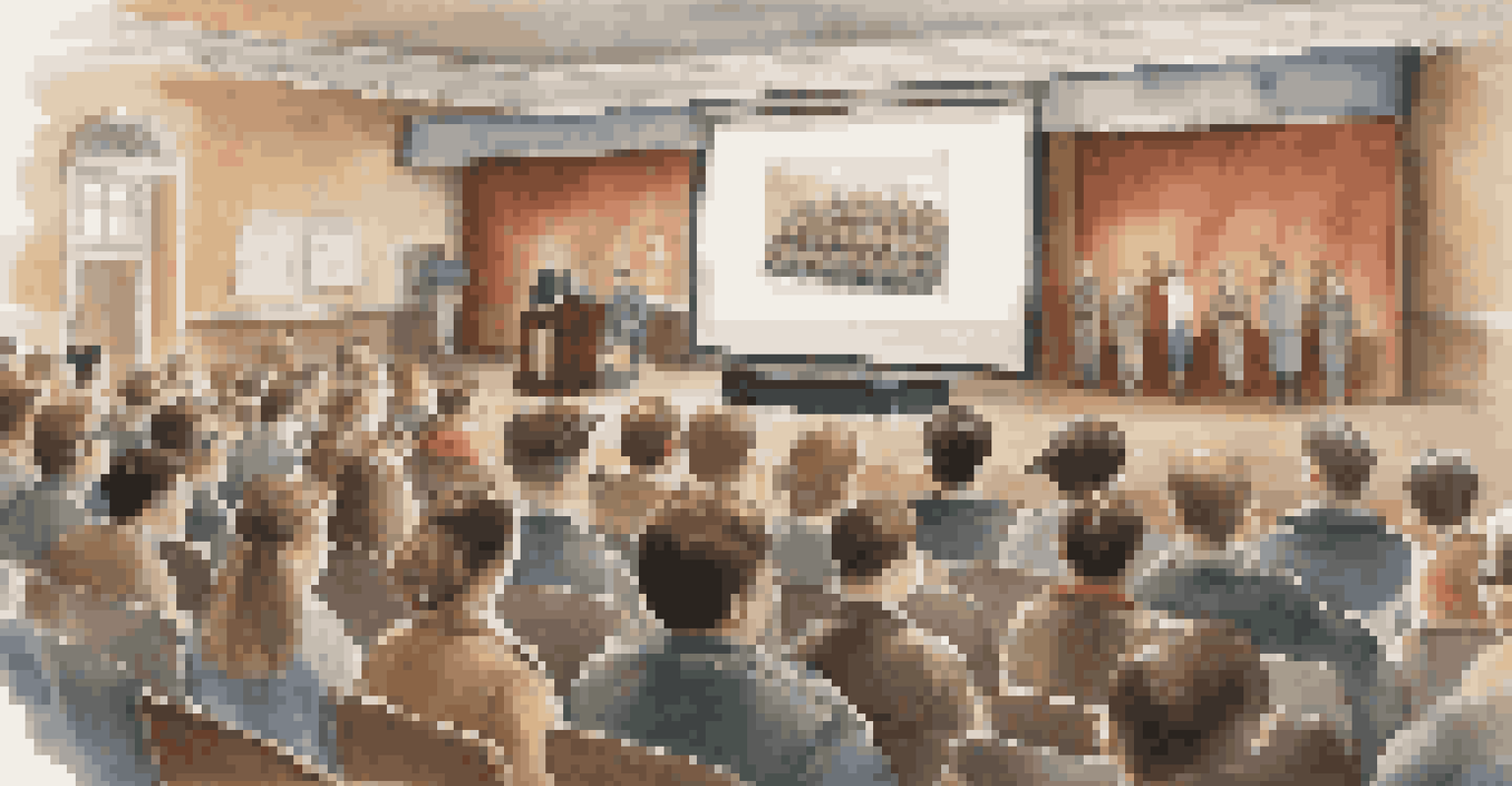Writing and Researching History: A Beginner's Guide

Understanding the Importance of Historical Writing
Writing history is not just about documenting facts; it's about interpreting events and understanding their significance. When we write history, we help others grasp the complexities of the past, making it relevant to today's world. By exploring different perspectives and narratives, we can create a richer tapestry of human experience.
History is not a burden on the memory but an illumination of the soul.
Moreover, historical writing fosters critical thinking skills. It encourages us to question sources, analyze evidence, and draw conclusions based on well-supported arguments. This analytical process not only benefits historians but also enriches our understanding of current events and societal issues.
Finally, engaging with history through writing can be a deeply personal endeavor. It allows individuals to connect with their own heritage, explore their identity, and share stories that may otherwise be forgotten. In this way, historical writing becomes a bridge between the past and our present lives.
Starting Your Research: Finding Reliable Sources
The first step in researching history is identifying credible sources. Academic books, peer-reviewed journals, and primary sources like letters or photographs are essential for building a solid foundation. Libraries and online databases can be invaluable resources for accessing these materials.

It's important to evaluate the reliability of your sources. Consider the author's credentials, the publication date, and whether the information is supported by evidence. Remember, even seemingly reputable sources can contain biases, so always cross-reference information when possible.
Historical Writing's Significance
Writing history helps us interpret events and connect the past to our present.
Additionally, don’t shy away from using digital resources. Websites like JSTOR and Google Scholar can lead you to scholarly articles, while archives and museums often have digitized collections available online. This blend of traditional and digital research methods can enhance your understanding of historical topics.
Developing a Research Question or Thesis Statement
Once you've gathered your sources, it's time to hone in on a specific research question or thesis statement. This will guide your writing and keep your focus sharp. A well-defined question can lead to a more structured and compelling narrative.
The one thing that you can’t take away from me is my history.
Consider what aspects of history pique your interest. Ask yourself how specific events, figures, or themes connect to broader historical contexts. This reflection can fuel your curiosity and provide a clearer direction for your research and writing.
Remember, your thesis statement should be arguable and specific. Instead of stating a fact, pose a question or claim that invites discussion. For example, rather than saying 'World War II happened,' you might argue, 'The economic factors leading to World War II highlight the failures of international diplomacy.'
Crafting an Engaging Narrative: Structure and Style
An effective historical narrative combines factual accuracy with engaging storytelling. Begin with a strong introduction that captures the reader's attention and outlines your main argument. Use anecdotes or vivid descriptions to bring historical figures and events to life.
Structuring your writing is equally important. Organize your work into clear sections or chapters, each focusing on different aspects of your research question. This not only helps maintain clarity but also allows readers to follow your argument more easily.
Importance of Reliable Sources
Identifying and evaluating credible sources is essential for building a solid historical narrative.
While maintaining a formal tone is crucial in historical writing, it’s also vital to find your own voice. A conversational style can make complex topics more accessible, allowing readers to connect with the material on a personal level. Striking this balance is key to engaging your audience.
Citing Sources: The Backbone of Historical Integrity
Citing your sources is a fundamental aspect of historical writing, ensuring that you give credit to the original authors and researchers. Proper citations not only bolster your credibility but also allow readers to explore your sources for further information. Familiarize yourself with citation styles such as APA, MLA, or Chicago, which are often used in historical research.
Incorporating footnotes or endnotes can also enhance your work by providing additional context or commentary without disrupting the flow of your narrative. This practice enriches the reader’s experience and demonstrates your thorough engagement with the material.
Remember, plagiarism is a serious offense in academic writing. Always attribute ideas, quotes, and data to their respective sources. This commitment to integrity not only reflects well on you as a writer but also honors the hard work of those who came before you.
Editing and Revising: The Key to Polished Writing
Editing and revising your work is crucial to producing a polished final product. After completing your first draft, take a break before diving back in with fresh eyes. This distance can help you identify areas that need improvement, whether in clarity, structure, or argumentation.
Consider seeking feedback from peers or mentors. A second opinion can provide valuable insights and help you spot mistakes you might have overlooked. Collaborating with others can also inspire new ideas and approaches to your writing.
Engaging Through Sharing Work
Publishing and presenting your historical research invites collaboration and enriches the broader discourse.
Finally, don’t hesitate to revise multiple times. Writing is a process, and each iteration brings you closer to your final vision. Embrace this journey of refinement, knowing that it’s an essential part of becoming a better historian and writer.
Sharing Your Work: Publishing and Presenting History
Once you’ve refined your writing, consider sharing your work with others. Whether through academic journals, blogs, or social media, publishing can help you reach a wider audience. Sharing your insights not only contributes to the historical discourse but also invites feedback that can further enrich your understanding.
Participating in conferences or workshops is another excellent way to present your research. Engaging with fellow historians can provide networking opportunities and foster meaningful discussions that elevate your work.

Finally, embrace the idea that history is a collective endeavor. By sharing your findings, you contribute to a broader conversation about our past, inspiring others to explore history and its relevance in today’s world.